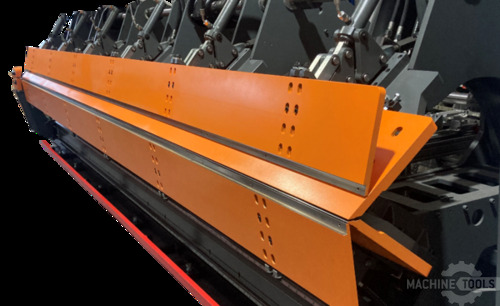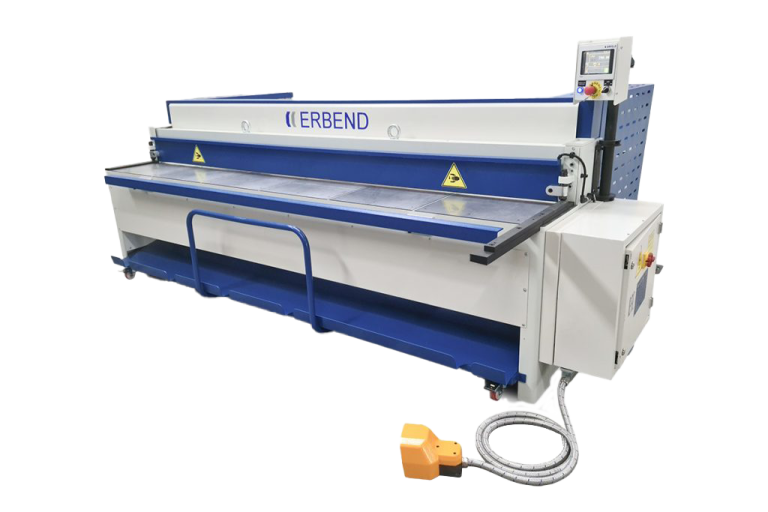From the bustling shop floors of southern Chicago to my current role at Mac-Tech, I’ve had the privilege of helping countless businesses enhance their metal fabrication processes. Whether it’s roofing lines or architectural fabrication, my focus has always been on empowering clients with the right tools and insights. Today, let’s delve into a topic I frequently discuss with our partners: the differences between mechanical and hydraulic shears.
Understanding the Basics: Mechanical vs. Hydraulic Shears
Mechanical shears operate through a flywheel-driven mechanism, offering consistent performance for high-volume tasks. Hydraulic shears, on the other hand, use fluid power to achieve precise cuts, making them ideal for varied workloads. In my experience, the choice often depends on the specific demands of your shop. Mechanical shears excel in speed and simplicity, while hydraulic models offer versatility and precision, especially in settings where material thickness varies.
Energy Efficiency: Key Differences and Considerations
Energy consumption is a critical factor for many operators. Mechanical shears typically consume less energy due to their straightforward design. However, hydraulic shears have improved significantly with advancements in technology, offering energy-efficient models that reduce waste and cost. I’ve seen shops benefit from upgrading to newer hydraulic systems, like those from Mac Shear, which offer significant savings over time.
Speed and Precision: How Each Type Impacts Throughput
When speed is of the essence, mechanical shears shine. Their rapid cycle times make them perfect for high-speed production environments. However, hydraulic shears provide unparalleled precision, which is crucial for intricate work. For instance, in architectural fabrication, where detail and accuracy are paramount, hydraulic shears often outperform their mechanical counterparts. Choosing the right shear can dramatically impact throughput and product quality.
MRGM 2560
Maintenance Insights: Keeping Your Shears in Optimal Condition
Regular maintenance is vital for both types of shears. Mechanical shears require routine checks of belts and flywheels, while hydraulic systems need fluid and seal inspections. A proactive maintenance schedule can prevent costly downtime. I’ve observed that shops implementing regular checks, especially for hydraulic systems, experience fewer interruptions and longer machine lifespans.
Real-World Applications: Enhancing Efficiency in Metal Folding and Roll Forming
In metal folding and roll forming, the right shear can enhance overall efficiency. For example, integrating hydraulic shears with coil systems or panel benders, like those from Erbend and Akyapak, can streamline operations. One of my clients saw a 20% increase in productivity after upgrading their setup to include a hydraulic shear, demonstrating the tangible benefits of choosing the right equipment.
Evaluating and Upgrading: Making Informed Decisions to Boost Workflow Integration
Deciding when to upgrade involves evaluating current performance and future needs. Consider factors like production volume, material types, and desired precision. I’ve guided many shops through the decision-making process, helping them choose upgrades that align with their goals, whether it’s a new Rytech roll former or enhanced safety features for older shears.
FAQ Section
When is the right time to upgrade a roll former or folder?
Evaluate your current equipment’s efficiency, maintenance costs, and output quality. If these are declining, it might be time to upgrade.
How do servo-driven folders compare to hydraulic systems?
Servo-driven folders offer precision and energy efficiency, often resulting in lower operating costs compared to traditional hydraulic systems.
What’s the difference between a combi-beam and double folder?
A combi-beam provides flexibility for various bending tasks, while a double folder offers speed and efficiency for specific applications.
What are signs a roll forming line is no longer cost-effective?
Increased downtime, frequent repairs, and inconsistent product quality are indicators that an upgrade might be necessary.
How can coil automation reduce operator requirements?
Automation streamlines processes, reducing the need for manual intervention and allowing operators to focus on quality control and oversight.
What kind of maintenance schedule do panel benders need?
Regular inspections, lubrication, and alignment checks are essential to maintain performance and prevent breakdowns.
Can older shears be upgraded with safety and accuracy features?
Yes, many older models can be retrofitted with modern safety and precision enhancements to extend their usability.
It’s been a pleasure sharing these insights with you. If you’re considering a walkthrough, demo, or quote, don’t hesitate to reach out. At Mac-Tech, we’re committed to your long-term success and are here to support your journey in modernizing and optimizing your production processes.
Get Weekly Mac-Tech News & Updates








